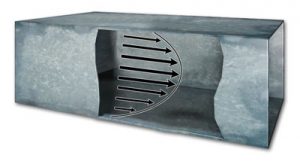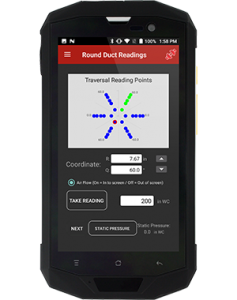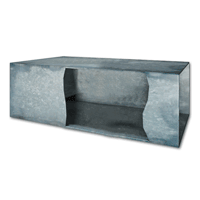 Picture this:
Picture this:
It is the first day on the job for a new contractor. Their project is to balance the HVAC system of a commercial office space. The contractor measures the total pressure and static pressure in the office duct work, using an air velocity manometer, and then calculates the velocity. The velocity measurement seems high, so the contractor is led to believe that either the measuring instrument isn’t precise enough, or the calculations are off. Therefore, the contractor turns to a duct traverse to check the velocity measurement.
The balancing process ensures that a HVAC system is running at its expected design flow for system efficiency, keeping energy bills low and maintaining a long equipment life expectancy. The balancing process consists of many crucial steps, including the traverse process.
 While a duct traverse offers the most accurate means of determining airflow, it is rarely used by HVAC professionals due to its intimidating nature. Dwyer has taken this difficult process and converted it into a step-by-step mobile app. The contractor in the above scenario would have been expected to follow the below traverse process steps either by memory or notes:
While a duct traverse offers the most accurate means of determining airflow, it is rarely used by HVAC professionals due to its intimidating nature. Dwyer has taken this difficult process and converted it into a step-by-step mobile app. The contractor in the above scenario would have been expected to follow the below traverse process steps either by memory or notes:
- Prepare circular or rectangular duct by drilling 3-5 holes into the side of the system, equally spaced apart from each other (The number of duct holes depends on the size of the duct).
- Follow the Log-Tchebycheff (Log-T) Rule for measurement relative to the inner wall of the duct. Use a minimum of 25 measurement points, not exceeding more than 6 inches in between the measuring points; for maximum airflow accuracy, 64 measurement points is best. Record data/results.
- Convert all pressure measurements into velocity and average them.

The above steps can be very time consuming and some parts can be forgotten easily. Dwyer’s TraverseIT™ Software Application simplifies this process by guiding technicians through the steps needed to take air velocity traverse readings of a duct; telling the user where to drill the holes; how far to insert the instrument for each reading; and logging all measurements. The app utilizes ISO 3966 standards for velocity calculation, Log-T reference, and traverse plane placement.
For more information on the duct traverse process, please read our post on Duct Traversing for Average Air Velocity and Air Volume.

